based on E.H. Nickel & M.C. Nichols (2009), H. Strunz & E.H. Nickel (2001),
revised by Thomas Witzke (2023)
4. OXIDES, HYDROXIDES
(Oxides, Hydroxides, V[5,6]-Vanadates, Arsenites, Antimonites, Bismutites, Sulfites, Selenites, Tellurites, Iodates)
4.A: Metal : Oxygen = 2 : 1 and 1 : 1
Cubo-ice, renamed (2022), originally described as Ice-VII. High-pressure phase as inclusions in diamond. The structure of cubo-ice is related to the structure of cuprite.
Methanhydrate is at time not described as a mineral. It is stable under higher pressures and/or low temperatures (23 atm and 0°C to 1 atm and ca. -80°C). Methanhydrate is a clathrate and isostructural with cubic melanophlogite (above ca. 40°C, melanophlogite is cubic, Pm3n).
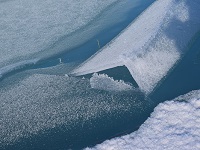 | 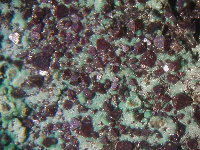 | 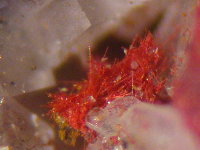 | 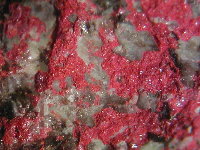 |
Zincite and Bromellite: framework of corner-sharing tetrahedra. Wurtzite-type structure.
Swedenborgite: Be in tetrahedral, Sb in octahedral and Na in 12-fold coordination. The structure consists mainly of layers of corner-sharing (BeO4) tetrahedra and (SbO6) octahedra that link together to form a dense network (Huminicki & Hawthorne, 2001, Can. Min. 39, 153-158).
Brownmillerite: sheets of corner-sharing (Fe,Al)O6 octahedra parallel (010) connected to single chains of (Al,Fe)O4 tetrahedra parallel [001]. Ca is in irregular, 7-fold coordination (Colville & Geller, 1971, Acta Cryst. B27, 2311-2315).
Tululite: framework based on a tetrahedral framework of T7O13 units with four corner-linked tetrahedra sharing an oxygen three tetrahedra linking to the neighboring units. The tetrahedra are occupied mainly with Zn, Mg, Al and Fe. Ca is coordinated by six oxygen in a twisted trigonal prism and in a 7-fold coordination in a one-capped trigonal prism. Additionally, (Al,Fe)O6 octahedra and (Si,P)O4 tetrahedra are present. A hypothetical end-member formula can be expressed as Ca14(Fe3+O6)(SiO4)(Zn5Al9)O26 (Khoury et al., 2015, Miner. Petrol. 110, 125-140).
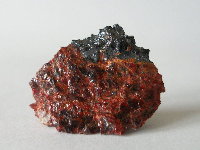 | 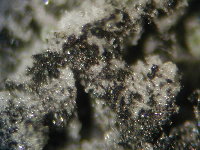 |  |  |
Halite structure, cations in octahedral coordination.
Alternating layers of edge-sharing MeO6 octahedra and layers of copper in a triangular array. Cu is coordinated to two oxygen from the adjacent octahedral layers. The structures of Crednerite, Delafossite and Mcconnellite are closely related, they show the same topology, but in Crednerite the Jahn-Teller effect of Mn3+-ions breaks the three-fold symmetry (Kondrashev, 1959, Sov. Phys. Cryst. 3, 703-706; Töpfer et al. 1995, Z. Krist. 210, 184-187).
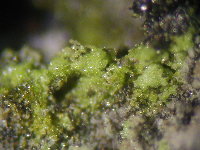 | 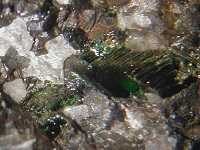 | 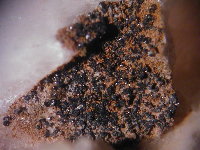 |  |
Palladinite: Pd in square planar coordination.
Layered structure with cations in 4-fold, tetragonal pyramidal arrangement.
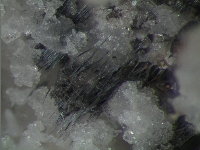 | 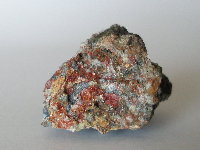 | 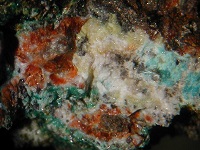 |
G = Grandfathered minerals: original description preceded the establishment of the CNMNC in 1959, and generally regarded as a valid species
A or IMA No. = Minerals approved by the CNMNC
Rd = Redefinition of the mineral approved by the CNMNC
Rn = Renamed with approval by the CNMNC
Q = Questionable mineral
Classification principles:
The subclass "4.A: Metal : Oxygen = 2 : 1 and 1 : 1" is partly re-arranged compared to Strunz 9, subdivision into 4.AA Cation : Anion (M : O) = 2 : 1 to 1.8 : 1; 4.AB Cation : Anion (M : O) = 1 : 1 to 0.8 : 1, with cations only in tetrahedral or in tetrahedral + other coordination; 4.AC Cation : Anion (M : O) = 1 : 1 to 0.8 : 1, with cations only in octahedral or in octahedral + other coordination; 4.AD Cation : Anion (M : O) = 1 : 1 to 0.8 : 1, with cations in other coordination (medium-sized to large cations)
Further classification:
4.AA. Cation : Anion (M : O) = 2 : 1 to 1.8 : 1 : Ice; copper oxides.
4.AB. Cation : Anion (M : O) = 1 : 1 to 0.8 : 1, with cations only in tetrahedral or in tetrahedral + other coordination : With cations only in tetrahedral coordination; with cations in tetrahedral + other coordination 4.AC.: Cation : Anion (M : O) = 1 : 1 to 0.8 : 1, with cations only in octahedral or in octahedral + other coordination: With cations only in octahedral coordination; with cations in octahedral + other coordination 4.AD.: Cation : Anion (M : O) = 1 : 1 to 0.8 : 1, with cations in other coordination: With medium-sized cations; with larger cations.
To distinguish from classical Strunz numbering, on hierarchical "group" level, a numbering with 3 digits is used, like "4.AA.005. Ice", instead of 2 digits (like "4.AA.05.") in the Strunz system.
© Thomas Witzke (2023)
